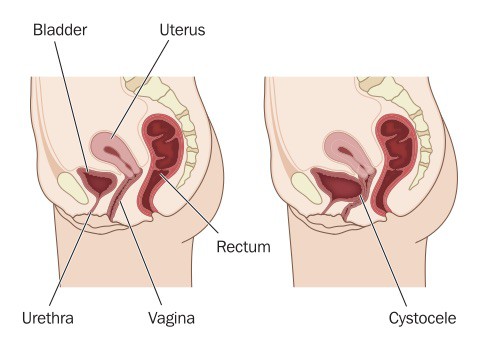What Every New Mom Should Know About Rectal Prolapse Postpartum
Welcome, new moms! Navigating the waters of motherhood is certainly an adventure filled with joyous moments, but it can also bring unexpected health concerns, like rectal prolapse after giving birth. In the midst of embracing your new role, it’s essential to take care of yourself too. So let’s dive into what a rectal prolapse is, why it can occur postpartum, and how you can manage this condition successfully!
What Is Rectal Prolapse?
First things first, understanding what rectal prolapse involves is crucial. A rectal prolapse happens when the rectum (the lower part of your large intestine just before the anus) becomes stretched out and protrudes through the anus. It can be quite uncomfortable, and sometimes a shocking issue to experience, but you’re not alone. This condition is something that many women face after childbirth.
Causes of Rectal Prolapse After Childbirth
The process of childbirth can be quite strenuous, and it puts a significant amount of pressure on the muscles and tissues in your pelvic area. This pressure, especially during a vaginal delivery, can weaken the pelvic floor muscles and ligaments that support the rectum. Factors like a prolonged labor, vaginal birth of a large baby, or multiple pregnancies can increase the risk of a rectal prolapse postpartum.
Symptoms of Rectal Prolapse to Watch Out For
Symptoms may vary from mild to severe and can include:
- A bulging sensation in your rectum or a feeling as though you’re sitting on a ball.
- Seeing or feeling a soft, reddish bulge protruding from your anus after straining or standing up.
- Discomfort or pain in the anal area, especially when sitting.
- Difficulty during bowel movements or an urge to have multiple bowel movements.
- Fecal incontinence or leakage of stool.
When to Seek Medical Advice?
If you’re experiencing any of these symptoms, it’s essential to consult with your healthcare provider. They can help you determine whether what you’re experiencing is indeed rectal prolapse or perhaps another issue such as hemorrhoids, which can also be common after childbirth.
Diagnostic Processes for Rectal Prolapse
Don’t worry, determining rectal prolapse is generally straightforward. Your healthcare provider may perform a physical examination and ask you to bear down as if you’re having a bowel movement to observe the prolapse. Other tests, like a colonoscopy, may be recommended to rule out any other conditions.
Management and Treatment Options
Lifestyle changes and self-care practices are the first lines of defense when managing rectal prolapse postpartum. Here are measures you can start with:
- Kegel Exercises: Strengthening your pelvic floor muscles can provide more support for your rectum.
- High-Fiber Diet: To ease constipation and straining, include lots of fruits, vegetables, and whole grains in your diet.
- Adequate Hydration: Keeping well-hydrated softens stool and promotes easier bowel movements.
- Avoid Heavy Lifting: Straining can exacerbate prolapse, so be mindful of your activities.
For more significant cases of rectal prolapse, there are nonsurgical and surgical options available. Nonsurgical treatments may involve stool softeners and the use of a rectal support device. Surgical repairs are considered when lifestyle changes do not relieve the symptoms, or if the prolapse is severe. The type of surgery will depend on various factors, including the extent of the prolapse and your overall health.
Dealing with rectal prolapse postpartum can be an emotional and physical challenge. Remember, though, this is a treatable condition, and with the right care, you can recover and get back to soaking up the joys of motherhood without the discomfort. Keep reading for more detailed information on each treatment method, recovery process, and support systems available to help you manage rectal prolapse after giving birth.

5 Essential Things Parents Should Know in Preparing for Rectal Prolapse After Giving Birth
1. Understanding Pelvic Floor Functions
The pelvic floor is a group of muscles that provide support for your pelvic organs. Knowing how these muscles work and their role during pregnancy and childbirth is important. Educate yourself early on and consider pelvic floor exercises even before you give birth to fortify these muscles.
2. Risks and Prevention Strategies
While it’s not always possible to prevent a rectal prolapse, being aware of the risk factors can help you take preemptive measures. For instance, maintaining a healthy weight, avoiding constipation, and learning proper techniques for lifting can mitigate the risk of pelvic floor weakening.
3. Importance of Postpartum Care
Don’t skip your postpartum check-ups. These visits are a great opportunity to discuss any concerns with your doctor and get timely advice on pelvic floor care. Staying on top of your health during the postpartum period is key to a stronger recovery.
4. Diet and Lifestyle Adjustments
A balanced diet rich in fiber along with plenty of fluids can significantly affect your bowel movements, easing the strain on the pelvic floor. Incorporating light, postpartum-friendly exercises can also be beneficial as long as your healthcare provider gives the go-ahead.
5. Knowing Your Treatment Options
In the event that you experience rectal prolapse, it’s helpful to be familiar with your options. Understanding the range of available treatments – from conservative management to surgical intervention – will help you make informed decisions and set realistic expectations for recovery.
Recovery Process and What to Expect
Recovery from a rectal prolapse repair depends on the type of treatment you receive. For nonsurgical approaches, you may find that symptoms improve gradually as you maintain consistent lifestyle changes. After surgical repair, recovery time can vary, but it’s essential to follow your surgeon’s instructions closely. Take it easy and avoid heavy lifting or straining during the recovery phase.
Support Systems for New Moms with Rectal Prolapse
Don’t be afraid to lean on your support system. Talk to your partner, family, or friends about what you’re going through. Joining a support group with other moms who have experienced similar issues can also be incredibly comforting and educational. Remember, seeking support is a sign of strength, not weakness.
You can also find valuable resources online, including forums and health websites that discuss postpartum pelvic floor issues. Engaging with a community can provide you with tips, encouragement, and reminders that you are not alone in this journey.
Childbirth is a miraculous and transformative experience, albeit with its set of challenges. Rectal prolapse can be one of those surprising postpartum hurdles, but it’s manageable with the right support and care. By staying informed, preparing, and connecting with healthcare professionals and fellow moms, you equip yourself with the knowledge and resources to navigate postpartum rectal prolapse confidently. Cheers to your health, and to all the incredible moments of motherhood that lie ahead!
See more great Things to Do with Kids in New Zealand here. For more information see here
Disclaimer
The articles available via our website provide general information only and we strongly urge readers to exercise caution and conduct their own thorough research and fact-checking. The information presented should not be taken as absolute truth, and, to the maximum extent permitted by law, we will not be held liable for any inaccuracies or errors in the content. It is essential for individuals to independently verify and validate the information before making any decisions or taking any actions based on the articles.




